 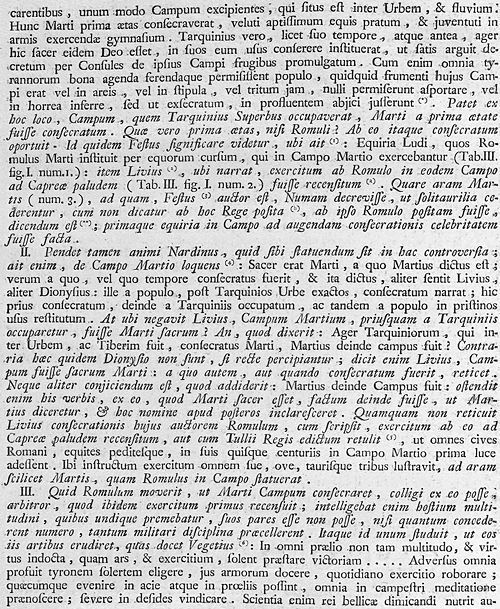 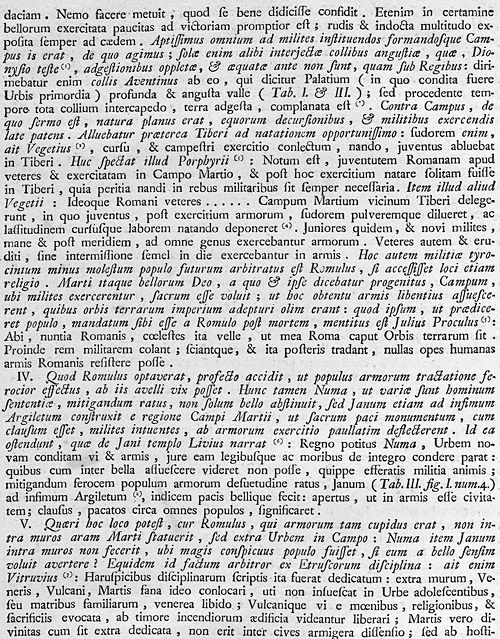 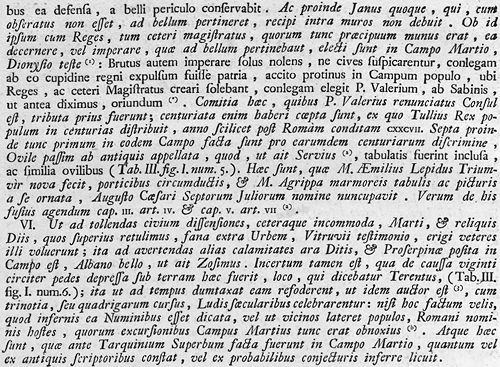
| |
Chapter Two
Of the naming and consecration of the Campo Marzio, and of the works made up until the time of the last Roman King, Targuin the Proud
The Campo was first a field for the exercise of horses and for the military exercises of Roman youths. It was consecrated (on decree of Consuls) so that there could be review of military. Here the Equirie were games (chariot races) that Romulus instituted to honor Mars (he cites Livy, Ovid).
Altar of Mars, signals dedication of Campo to the god Mars;
(Livy and Diogenes differ on who consecrates it, and when consecrated; commented upon by Nardini)
It could be Romulus, or King Numo who ordered sacrifices of pigs, sheep and bulls here...
"We could ask why didn't Romulus, who was avid for war, not place the altar of Mars within the city walls, but rather outside Rome in the Campo, and why King Numo didn't put the Temple of Jupiter inside the walls, also. I believe that this was dictated by the teachings (or customs) of the Etruscans." [here he cites Vitruvius] The Temples of Venus, Vulcan, and Mars were outside the walls so that the youths and the mothers did not have to come near the lasciviousness of Venus ... nor the dissention around Mars, nor the war.
Temple of Giano (Janus). Its doors are open when Rome is at war.
Septa Julia, built year CXXCVII;
King Servio Tuilio divided the Roman peoples into military units or centuries. Septi refers to meeting house of Tribunes (military leaders?)
Also referred to as Ovile (meaning sheepfold), reference to military housing? The Septa was remade by one of Triumvirate (M. Emilio Lepido) vath porticoes inside; the portico was adomed vath marble reliefs and vath pictures (paintings?) paid for by Marcus Agrippa (general and son-in-law to Caesar Augustus).
Marcus Agrippa dedicated it to Julius Caesar to honor Caesar Augustus.
[My note: Piranesi knew of some 15th-16th century drawings of the remains of the Septa, e.g., that by Martin Heemskeerck]
Altar of Dite and Prosperpina, placed outside of walls of Rome (see Vitruvius); created after successful war against the Albans.
No one knows where the place called Terento was located as it was 20 piedi underground (lists a bunch of ancient authors).
It was here that i tronozi was celebrated. It was the running of quadriga (2-wheeled chariots and 4 horses abreast), for popular sport, or for held secretly by the populus against its enemies; dedicated to the underground or infernal gods. (cites Dona; Nardini; Ovid)
SMD synopsis
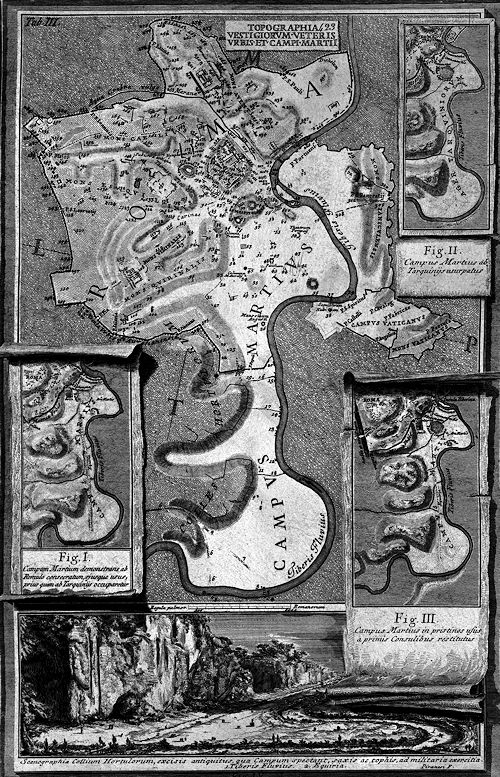
Plate III
Chapter Two references the Altar of Mars as Plate III, Figure 1, number 3. In reality there are no numbers within Figure 1, rather the various cited edifices are labelled by name.
|
| |
It appears the Altar of Mars was actually the first erection of the Campus Martius.
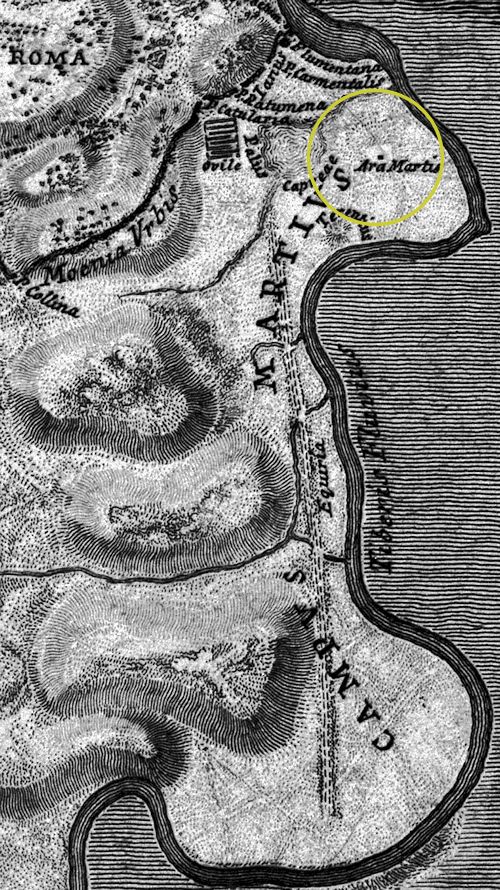
Plate III, Figure 1
|